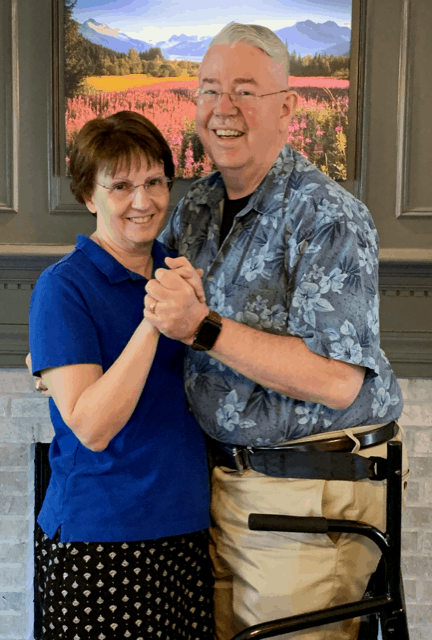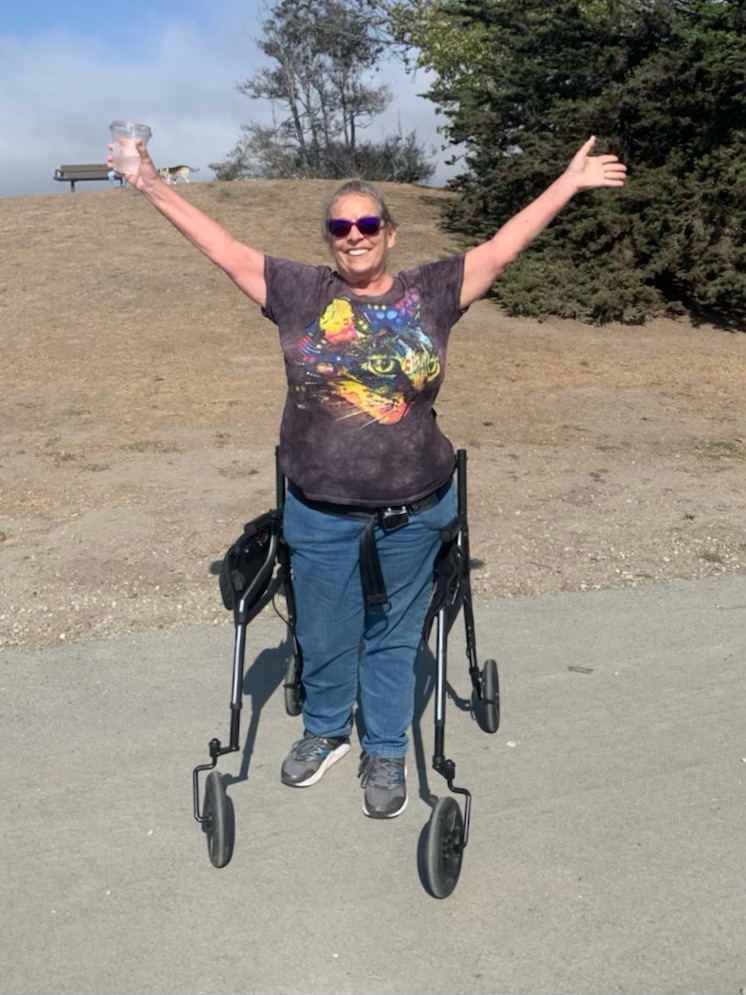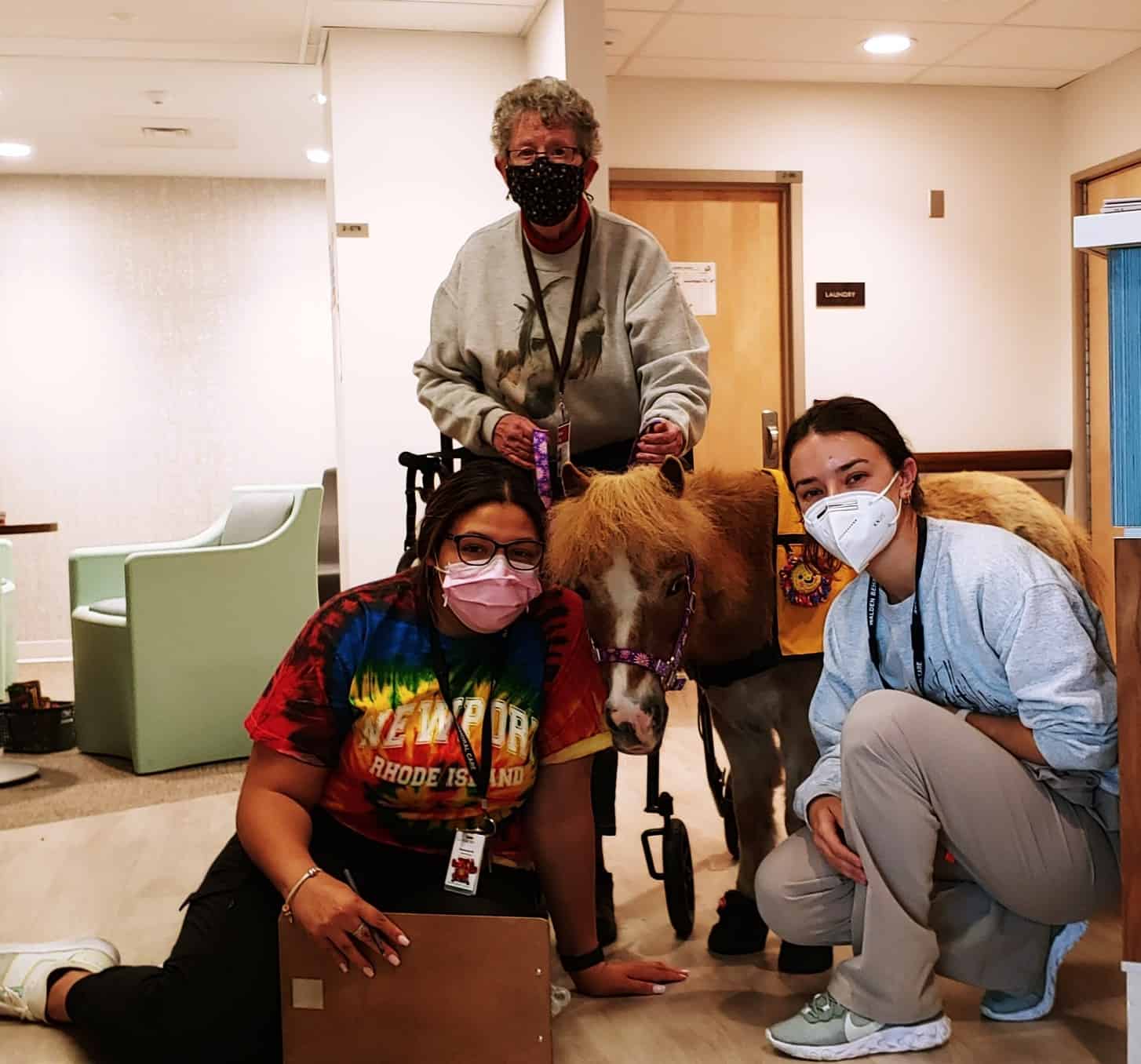 Multiple Sclerosis (MS) is a nasty disease, and that may be the understatement of the year. It’s also a very personal disease because everyone with the disease has a story, and not one is the same. Yes, there are some things you can do to affect that story, but I believe it is largely a matter of luck. I consider myself quite lucky.
Multiple Sclerosis (MS) is a nasty disease, and that may be the understatement of the year. It’s also a very personal disease because everyone with the disease has a story, and not one is the same. Yes, there are some things you can do to affect that story, but I believe it is largely a matter of luck. I consider myself quite lucky.
My MS story started in January 1990, on board the 180-foot Coast Guard Cutter Woodrush in a drydock in Ketchikan, Alaska. We were there to replace our propeller shaft before we crossed the Northern Pacific to go to Hawaii for Refresher Training. One morning, I woke up, jumped out of my rack (bed) onto the steel deck and found that one foot was warm and the other was cold. I thought, “That’s strange.” I immediately had the sense that my world had just changed. Boy, was I right!
Long story short, in December of that year, I was diagnosed with MS. I was on my way out of the Coast Guard by March. I had just turned 32 with a wife, three kids, and a fourth one on the way. Believe it or not, to this day, I know that was the best thing that ever happened to me. Being medically retired from the Coast Guard allowed me to go on to become a computer engineer at the Department of Energy and do all kinds of crazy and amazing things.
The way I deal with my MS is to treat it as a game. Fortunately, I have relapsing/remitting MS, and that makes the rules of the game pretty clear. A relapse is when the immune system is attacking the nervous system. The remitting part is when it stops, and the nervous system has a chance to recover. The game is simple: you want to have few relapses, as long a time between relapses as possible, and as mild a relapse as possible. During the remitting phase, you want to recover as much as possible. Then when the cure comes along, and I am confident that it will, you will be in as good as shape as possible to the take advantage of it.
A big part of the challenge of relapsing/remitting MS is that you will never quite recover back to where you started before a relapse. You’re always losing function, bit by bit. Finding a cure for MS is winning, but there are plenty of bonus points along the way, awarded for maintaining function. However, sometimes you get the chance to recover function. Those are rare, but when they happen, it is like finding an Easter egg in the game. Wow!
Over the years, I have had the chance to work with a lot of different neurologists, physical therapists, orthopedists, and medical diagnostic technicians. I have spent many hours stuffed into the tube of MRI machines (not for the faint of heart or the claustrophobics). I have done my research, and to the degree possible, worked to find people who are researchers in addition to treating patients. I then ask them a lot of questions to improve my understanding of what is happening and why. I have done my best to recruit them onto “Team Alex” so that they become partners on my MS adventure.
LifeGlider Changes the Trajectory of My MS Journey
Recovery has meant innumerable sessions with Physical Therapists or PTs. The amazing thing about PTs is their ability to observe you and then find ways to correct what is wrong. Sometimes that doesn’t work because of the effects of the MS, but they find ways to work around it.
The reality of my MS is that it impacts certain physical functions but not others. I have found one of the keys to success is to isolate where you are limited and maximize your functional abilities.
When I first saw the LifeGlider video, I got that same feeling I did in 1990 in my cramped stateroom on the buoy tender. I knew that my world was about to change.
My primary issues are my balance, the weakness in my legs, and the spasticity that causes stiffness. Imagine wearing a suit of armor. You have to be very careful when you move because you know that if you fall, it’s going to be really hard to get up again.
I could see how the LifeGlider would deal with my primary issues and let me build on my ability to move my legs. It introduced the idea that if I fell in my suit of armor, I can stumble and not fall. I can move with more confidence and therefore move better.
Human beings, by nature, are efficient. But when you have impairments like mine, you don’t use the energy properly. You’re not walking properly, so it becomes very tiring to walk. The LifeGlider allows me to walk correctly again because I’m not worried about falling. I know I’m supported. I’m standing upright, I swing my hips, I do all the things I’m supposed to be doing. I’m reminding my muscles how to walk; this is the way it’s supposed to be.
A lot has happened to me along the way. My life has been an amazing adventure that has allowed me to travel the world, sail across oceans, climb mountains, and make significant contributions to advanced computing and modeling and simulation. However, the best thing I ever did, was finding and then marrying my wife of 39 years: Mary Ann. She is amazing. I thought my dancing days with her were over – but thanks to the LifeGlider, they’re not.
My story is not anywhere near over, but we are also not at the beginning. I estimate that we are at about the “middle of the middle.” However, I will say that the discovery of the LifeGlider has changed the trajectory.


